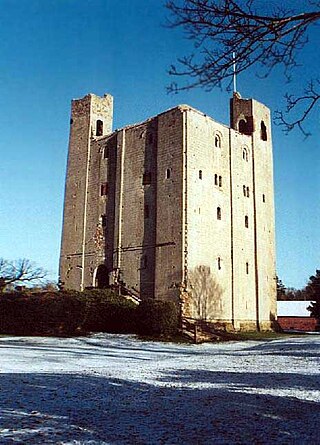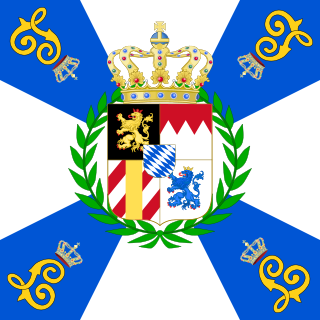Related Research Articles

Condottieri were Italian captains in command of mercenary companies during the Middle Ages and of multinational armies during the early modern period. They notably served popes and other European monarchs during the Italian Wars of the Renaissance and the European Wars of Religion. Notable condottieri include Prospero Colonna, Giovanni dalle Bande Nere, Cesare Borgia, the Marquis of Pescara, Andrea Doria, and the Duke of Parma.

Sir John Hawkwood was an English soldier who served as a mercenary leader or condottiero in Italy. As his name was difficult to pronounce for non-English-speaking contemporaries, there are many variations of it in the historical record. He often referred to himself as Haukevvod and in Italy he was known as Giovanni Acuto, literally meaning "John Sharp" in reference to his "cleverness or cunning". His name was Latinised as Johannes Acutus. Other recorded forms are Aucgunctur, Haughd, Hauvod, Hankelvode, Augudh, Auchevud, Haukwode and Haucod. His exploits made him a man shrouded in myth in both England and Italy. Much of his enduring fame results from the surviving large and prominent fresco portrait of him in the Duomo, Florence, made in 1436 by Paolo Uccello, seen every year by 4½ million tourists.

A man-at-arms was a soldier of the High Medieval to Renaissance periods who was typically well-versed in the use of arms and served as a fully-armoured heavy cavalryman. A man-at-arms could be a knight, or other nobleman, a member of a knight's or nobleman's retinue, or a mercenary in a company serving under a captain. Such men could serve for pay or through a feudal obligation. The terms knight and man-at-arms are often used interchangeably, but while all knights equipped for war were men-at-arms, not all men-at-arms were knights.
The lance fournie was a medieval equivalent to the modern army squad that would have accompanied and supported a man-at-arms in battle. These units formed companies under a captain either as mercenary bands or in the retinue of wealthy nobles and royalty. Each lance was supposed to include a mixture of troop types that would have guaranteed a desirable balance between the various components of the company at large; however, it is often difficult to determine the exact composition of the lance in any given company as the available sources are few and often centuries apart.

Bernabò or Barnabò Visconti was an Italian soldier and statesman who was Lord of Milan. Along with his brothers Matteo and Galeazzo II, he inherited the lordship of Milan from his uncle Giovanni. Later in 1355, he and Galeazzo II were rumoured to have murdered their brother Matteo since he endangered the regime. When Galeazzo II died, he shared Milan's lordship with his nephew Gian Galeazzo. Bernabò was a ruthless despot toward his subjects and did not hesitate to face emperors and popes including Pope Urban V. The conflict with the Church cost him several excommunications. On 6 May 1385, his nephew Gian Galeazzo deposed him. Imprisoned in his castle, Trezzo sull'Adda, he died a few months later, presumably from poisoning.
The War of the Eight Saints (1375–1378) was a war between Pope Gregory XI and a coalition of Italian city-states led by Florence that contributed to the end of the Avignon Papacy.

The White Company was a 14th-century English mercenary Company of Adventure, led from its arrival in Italy in 1361 to 1363 by the German Albert Sterz and later by the Englishman John Hawkwood. Although the White Company is the name by which it is popularly known, it was initially called the Great Company of English and Germans and would later often be referred to as the English Company.
The Great Company was a group of mercenaries, chiefly of German origin but operating in the Italian peninsula, who flourished in the mid-14th century. At its height, the company numbered approximately 10,000-12,000 men, chiefly armored cavalry. The Great Company's power set the pattern for later condottieri who came to dominate Renaissance Italian warfare.
Gérard du Puy was a French cardinal of the Roman Catholic Church and cardinal-nephew of Pope Gregory XI.

The Funerary Monumentto SirJohn Hawkwood is a fresco by Paolo Uccello, commemorating English condottiero John Hawkwood, commissioned in 1436 for Florence Cathedral. The fresco is an important example of art commemorating a soldier-for-hire who fought in the Italian peninsula and is a seminal work in the development of perspective.

Pittura infamante is a genre of defamatory painting and relief, common in Renaissance Italy in city-states in the north and center of the Italian Peninsula during the Trecento, Quattrocento, and Cinquecento. Popular subjects of pittura infamante include traitors, thieves, and those guilty of bankruptcy or public fraud, often in cases where no legal remedy was available. Commissioned by governments of city-states and displayed in public centers, pittura infamante were both a form of "municipal justice" and a medium for internal political struggles.
According to Samuel Edgerton, the genre began to decline precisely when it came to be regarded as a form of art rather than effigy; the power of the genre derived from a feudal-based code of honor, where shame was one of the most significant social punishments. As such, pittura infamante has its roots in the doctrines of fama and infamia in ancient Roman law.

John de Vere, 7th Earl of Oxford was the nephew and heir of Robert de Vere, 6th Earl of Oxford who succeeded as Earl of Oxford in 1331, after his uncle died without issue.

A free company was an army of mercenaries between the 12th and 14th centuries recruited by private employers during wars. They acted independently of any government, and were thus "free". They regularly made a living by plunder when they were not employed; in France they were called routiers and écorcheurs and operated outside the highly structured law of arms. The term "free company" is most often applied to those companies of soldiers which formed after the Peace of Brétigny during the Hundred Years' War and were active mainly in France, but it has been applied to other companies, such as the Catalan Company and companies that operated elsewhere, such as in Italy and the Holy Roman Empire.

The Bavarian Army was the army of the Electorate (1682–1806) and then Kingdom (1806–1919) of Bavaria. It existed from 1682 as the standing army of Bavaria until the merger of the military sovereignty of Bavaria into that of the German State in 1919. The Bavarian Army was never comparable to the armies of the Great Powers of the 19th century, but it did provide the Wittelsbach dynasty with sufficient scope of action, in the context of effective alliance politics, to transform Bavaria from a territorially-disjointed small state to the second-largest state of the German Empire after Prussia.

The Battle of Cascina was an engagement between Pisan and Florentine troops on 28 July 1364 near Cascina, modern-day Italy. Florence's victory followed a recent defeat to Pisan forces that had enabled mercenary John Hawkwood, who was in command of the Pisan army, to occupy the Valdinievole, Prato en route to Florence. Hawkwood and his army looted the lucrative Mugello region and Pistoia before proceeding towards Florence. Hawkwood fought alongside Hanneken von Baumgarten and had 3,000 men-at-arms at his disposal.

Friedrich Freiherr (Baron) von Hotze, was a Swiss-born general in the Austrian army during the French Revolutionary Wars. He campaigned in the Rhineland during the War of the First Coalition and in Switzerland in the War of the Second Coalition, notably at Battle of Winterthur in late May 1799, and the First Battle of Zurich in early June 1799. He was killed at the Second Battle of Zurich.
The Compagnia di San Giorgio was the name of several companies of mercenaries in Italy during the 14th century.
Konrad Wirtinger von Landau, known in Italy as Conte Lando, was a German military adventurer and condottiero who was active in north and central Italy.
Albert Sterz was a German noble who was a leader of mercenary Free companies, primarily operating in Italy.
The Battle of Campo delle Mosche took place on 23 July 1359 in the district of Pontedera in the state of Pisa, Italy between the forces of Florence and those of the mercenary Great Company. It resulted in a victory for the Florentine forces.
References
- ↑ Caferro, William (2006). John Hawkwood: An English Mercenary in Fourteenth Century Italy. Baltimore: Johns Hopkins Press. pp. 59–60. ISBN 0-8018-8323-7.
- ↑ Caferro (2006), p.59
- ↑ Caferro (2006), p.60